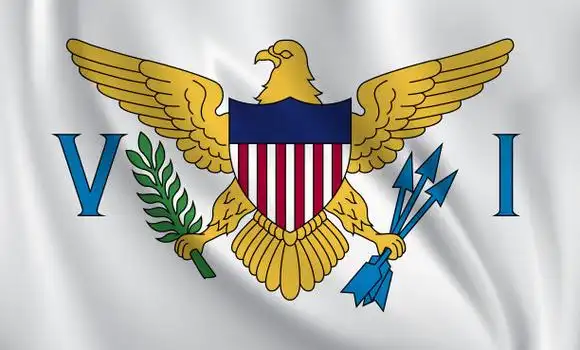- Focus on product development, production and sales.

Overview of the US Virgin Islands
The US Virgin Islands is an unincorporated territory of the United States in the Caribbean Sea, located east of Puerto Rico and west of the British Virgin Islands, and is the northernmost part of the Lesser Antilles. The archipelago consists of over 50 small islands and coral reefs, with a total area of 344 square kilometers. The main islands include St. Croix, St. John, St. Thomas, and the historically significant Water Island.
The climate of the US Virgin Islands belongs to a tropical climate, with an average annual temperature of about 26 ° C and little temperature difference. The main islands within the archipelago are mostly volcanic islands with mountainous terrain, with the highest point located on St. Thomas Island at an altitude of 474 meters. The archipelago is renowned for its white beaches and strategic harbors of Charlotte Amalia and Christianstad.
In terms of economic activities, the US Virgin Islands is a famous tourist destination, and tourism is one of its dominant economic activities. The Virgin Islands National Park and Buck Island National Reserve within the archipelago have attracted a large number of tourists. In addition, the free port status and pleasant natural environment of the archipelago have also promoted the development of souvenir and handicraft production.
In terms of historical background, the US Virgin Islands arrived by Columbus in 1493, were annexed by Britain in 1672, became part of the British colony of the Leeward Islands in 1872, and remained a British territory until 1960. In 1917, the United States incorporated it into its territory through the Organic Law and became an unincorporated territory of the United States.
In terms of traffic regulations, the US Virgin Islands is the only area in the United States where road traffic drives on the left.
The economy of the US Virgin Islands is primarily driven by tourism, oil refining, and electronics industries. The tourism industry is one of the main economic pillars of the US Virgin Islands, with revenue accounting for over 60% of the gross domestic product. The refining industry is also an important economic activity in the region, with Saint Croix Island being one of the largest refineries in the world with a daily processing capacity of 5.45 million barrels of crude oil. In addition, the electronics industry also holds an important position in the economy of the region.
The main export products include vegetables, fruits, rum, and watches. The agriculture in the US Virgin Islands is mainly focused on growing vegetables and fruits, while cattle raising and fishing are also important economic activities. Rum is one of the main export products, mainly brewed from sugarcane.
Economically, it heavily relies on imports of American goods, with 90% of its trade going to Puerto Rico and the United States. In addition, the job market in the region is highly dependent on the United States, and many job opportunities are closely related to economic activity in the United States.